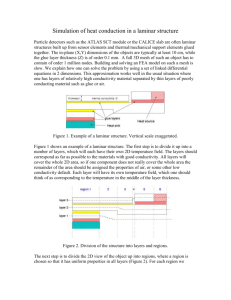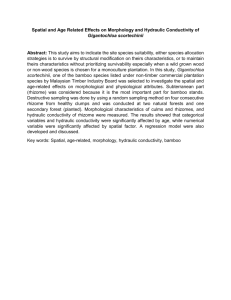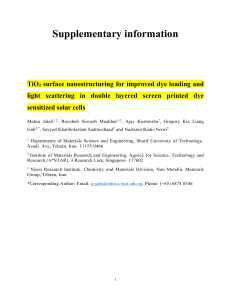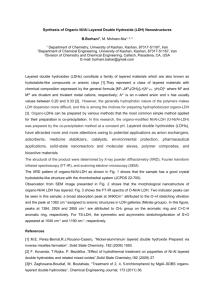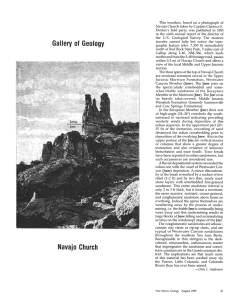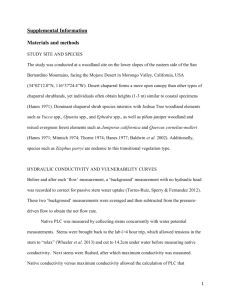Effective Conductivity Parallel to Layers
advertisement
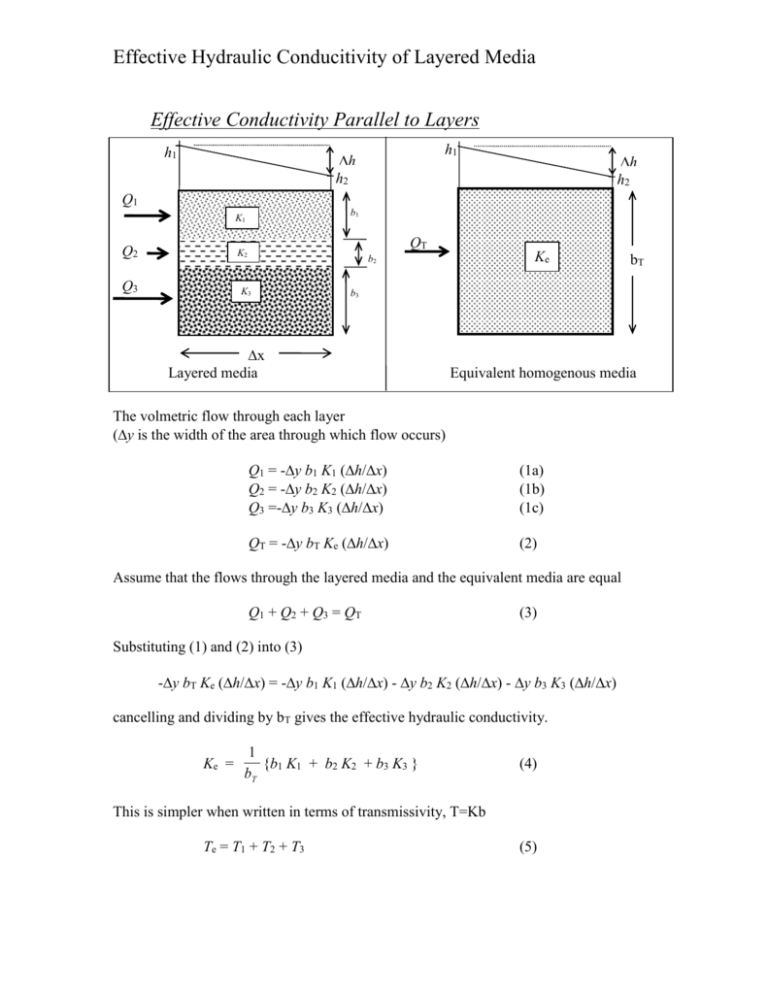
Effective Hydraulic Conducitivity of Layered Media
Effective Conductivity Parallel to Layers
h1
h1
h
h2
h
h2
Q1
b1
K1
Q2
QT
K2
Q3
Ke
b2
K3
b3
x
Layered media
Equivalent homogenous media
The volmetric flow through each layer
(y is the width of the area through which flow occurs)
Q1 = -y b1 K1 (h/x)
Q2 = -y b2 K2 (h/x)
Q3 =-y b3 K3 (h/x)
(1a)
(1b)
(1c)
QT = -y bT Ke (h/x)
(2)
Assume that the flows through the layered media and the equivalent media are equal
Q1 + Q2 + Q3 = QT
(3)
Substituting (1) and (2) into (3)
-y bT Ke (h/x) = -y b1 K1 (h/x) - y b2 K2 (h/x) - y b3 K3 (h/x)
cancelling and dividing by bT gives the effective hydraulic conductivity.
Ke =
1
{b1 K1 + b2 K2 + b3 K3 }
bT
(4)
This is simpler when written in terms of transmissivity, T=Kb
Te = T1 + T2 + T3
bT
(5)
Effective Hydraulic Conducitivity of Layered Media
Effective Conductivity Normal to Layers
h1
h1
h2
h14
h14
h4
h4
h3
q
K1
b1
K2
b2
q
K3
Ke
bT
b3
Layered media
Equivalent homogeneous media
According to Darcy’s Law, the flux through each layer is
h h1
h
b
q1 K1 2
K1 12 ;
or
h12 q1 1
b1
b1
K1
h3 h2
h
K2 23 ;
b2
b2
h h3
h
q 3 K3 4
K3 34 ;
b3
b3
and
h h1
h
q e Ke 4
Ke 14 ;
bT
bT
q 2 K2
or
or
or
b2
K2
b
h34 q 3 3
K3
h23 q 2
h14 q e
bT
Ke
where h23 is shorthand for the head drop across layer 2, etc. Assuming that the head
drop across the equivalent media is the same as the total drop across the layers
b
b
b
b
h14 h12 h23 h34 ;
or q e T q1 1 q 2 2 q 3 3
Ke
K1
K2
K3
But the flux through each layer is the same, and they are equal to the flux through the
equivalent layer, so
n
bT
bT
Ke =
or for n layers Ke =
b1
b2
b
i=1 bi
3
K2
K3
K1
Ki

